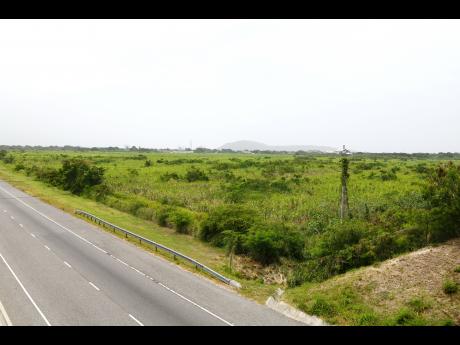NEPA gives qualified nod - Agency approves broad outline, but says individual developers will need approval
Peter Knight, CEO of the National Environment and Planning Agency (NEPA), has confirmed that it has approved, in principle, the Government's planned mega development on the Bernard Lodge lands in St Catherine.
"NEPA has not signed off on the developments per se, since individual developers will be required to obtain approval from the NEPA and the (Portmore) Municipal Corporation.
"What the NEPA has signed off on is the Cabinet-mandated master plan to guide the orderly and sustainable development of the Bernard Lodge lands," Knight said in response to questions from The Sunday Gleaner.
According to Knight, the environmental features of the lands were taken into consideration in the preparation of the master plan, and there was a comprehensive environmental assessment for all the parcels of lands.
"The master plan also benefited from focused technical work by a diverse team of professionals: architects, engineers, urban and rural planners, GIS personnel working in collaboration with the NEPA technical staff and technical staff drawn from other government departments and agencies, with inputs from the private sector developers and other stakeholders," declared Knight.
He said the master plan was approved by the Cabinet from as far back as January of this year.
Knight hinted that NEPA has taken comfort in the assurance from the Government that an enterprise team is to be appointed to give oversight to the plan and to undertake further detailed studies and analysis, with wider consultation, as required before the project advances.
"The NEPA would not support development of the lands if it proposes to take place outside the prescribed modality presented in the master plan. Having stated the foregoing, the agency is confident that the technical studies done are indicative of what can be done on the lands," said Knight.
Responding to repeated concerns that the proposed development would compromise the water supply situation for Portmore and other parts of St Catherine, Knight said the impact on existing water supply systems was extensively interrogated as a major issue.
"While potential sources of water to support the developments have been identified, there is need for further detailed studies and analysis. These requirements are being examined by the Water Resources Authority and the National Water Commission," added Knight, without indicating where the potential sources of water had been identified.
He denied that the agency had reneged from its previous position of not allowing further housing and other developments on the ecologically sensitive Bernard Lodge lands.
"Previous to the Cabinet's policy decision that it would not approve further divestment and/or sale of the lands for development in the absence of a comprehensive master plan to guide it, the decision presented the NEPA with a golden opportunity to clinically and critically examine all the hazards and mitigation issues and propose the measures required should the land be made available to developers.
"Central to all this was the need to protect and preserve the environment, including the aquifers. As designed, the master plan considered the possible impacts, and made provisions for detention/retention ponds and imposed conditions for construction that will minimise impacts on the environment (and the aquifers).
"Some of the measures are the exact ones mandated by the Water Resources Authority in granting approval for earlier developments in the area," said Knight.
He admitted that NEPA did not conduct an environmental impact assessment (EIA) on the land but said the development master plan benefited from detailed 'ground-truthing' and what he described as a comprehensive rapid environmental impact assessment, detailed research, data gathering and studies inclusive of a regional spatial analysis, transportation and traffic assessments, a comprehensive drainage study and a social and economic analysis.
Knight argued that this was "comparable, and in some aspects stronger, than an EIA".
He said the rapid environmental impact statement identified potential impacts on underground water resources, existing social and physical infrastructure needs, biodiversity loss as well as loss of agricultural lands, among others, and recommended mitigation measures to be undertaken.
These include the protection and creation of adequate buffers zones to protect existing water sources and distribution systems; the preservation of agricultural land and the implementation of adequate physical and social infrastructure.


